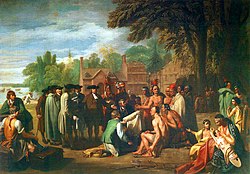| City of Sherrill v. Oneida Indian Nation of New York | |
|---|---|
 | |
| Argued January 11, 2005 Decided March 29, 2005 | |
| Full case name | City of Sherrill, New York v. Oneida Indian Nation of New York, et al. |
| Citations | 544 U.S. 197 ( more ) 125 S. Ct. 1478, 161 L. Ed. 2d 386 |
| Case history | |
| Prior | Oneida Indian Nation v. City of Sherrill, 337 F.3d 139 (2d Cir. N.Y. 2003) |
| Subsequent | Rehearing denied, 544 U.S. 1057 (2005), on remand sub nom. Oneida Indian Nation of N.Y. v. Madison Cnty., 401 F. Supp. 2d 219 (N.D.N.Y. 2005), motion to amend denied, 235 F.R.D. 559 (N.D.N.Y. 2006), aff'd, 605 F.3d 149 (2nd Cir. 2010), cert. granted, 131 S. Ct. 459 (2010), vacated and remanded sub nom. Madison Cnty. v. Oneida Indian Nation of N.Y., 131 S. Ct. 704 (2011) (per curiam) |
| Holding | |
| Reversed and remanded. Held that repurchase of traditional tribal lands did not restore tribal sovereignty to that land. | |
| Court membership | |
| |
| Case opinions | |
| Majority | J. Ginsburg, joined by C.J. Rehnquist, J. O'Connor, J. Scalia, J. Kennedy, J. Souter, J. Thomas, and J. Breyer |
| Concurrence | J. Souter |
| Dissent | J. Stevens |
| Laws applied | |
| 25 U.S.C. 465 | |
City of Sherrill v. Oneida Indian Nation of New York, 544 U.S. 197 (2005), was a case in which the Supreme Court of the United States held that repurchase of traditional tribal lands did not restore tribal sovereignty to that land. [1]
